 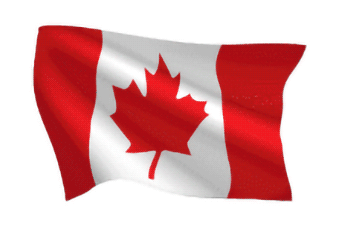 Several different flags were used in Canada before our current flag was made official. For almost a century, Canadians and their governments had to use the Red Ensign as the unofficial national flag. The United Kingdom's Royal Union Flag, commonly known as the Union Jack, was also used to represent Canada. 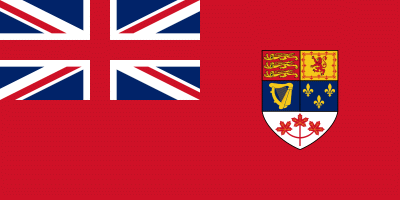 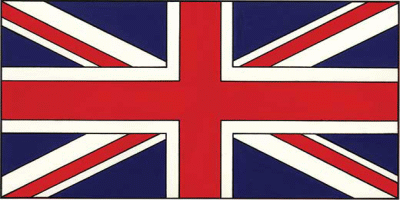 Originally used to identify Canadian ships at sea, the Canadian Red Ensign (above, left) featured the Union Jack and the Canadian coat of arms, and was widely recognized as our national symbol; it was in fact the Canadian national flag from 1868 until 1965, although never formally adopted as such. After the Second World War, many Canadians felt that a new, distinctively Canadian flag was needed to symbolize Canada's independence. While some believed in maintaining the tradition of the Red Ensign, in August 1958 a national Gallup Poll showed that 85.3 per cent of Canadians approved of "having a National Flag, entirely different from that of any other country." The issue of a new flag was raised again by Lester Pearson. He did so in 1960 as leader of the Opposition and again as prime minister in 1963. Pearson's parliamentary secretary, Liberal MP John Matheson, led the government's efforts to adopt a new flag. 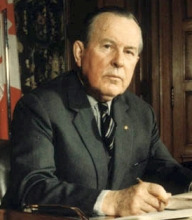 Lester ("Mike") Pearson was prime minister from 1963 to 1968. A statesman, politician, public servant, and professor, he was Canada's foremost diplomat of the era. He developed Canada's postwar foreign policy, particularly its involvement in NATO and the U.N., where he was president of the General Assembly. In 1957 he received the Nobel Peace Prize for facilitating an end to the Suez Crisis. He rebuilt the Liberal Party and as prime minister strove to maintain Canada's national unity. His government implemented a Canada Pension Plan; a universal medicare system; a unified Armed Forces; and a new national flag. He died in 1972.
Lester ("Mike") Pearson was prime minister from 1963 to 1968. A statesman, politician, public servant, and professor, he was Canada's foremost diplomat of the era. He developed Canada's postwar foreign policy, particularly its involvement in NATO and the U.N., where he was president of the General Assembly. In 1957 he received the Nobel Peace Prize for facilitating an end to the Suez Crisis. He rebuilt the Liberal Party and as prime minister strove to maintain Canada's national unity. His government implemented a Canada Pension Plan; a universal medicare system; a unified Armed Forces; and a new national flag. He died in 1972.
In the spring of 1964, Prime Minister Lester B. Pearson announced his government’s plan to adopt “a flag that is truly distinctive and truly national in character.” A special parliamentary committee considered thousands of proposals in the summer of 1964. A few of the many proposals: 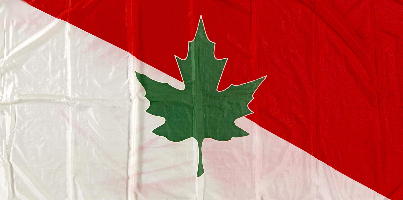
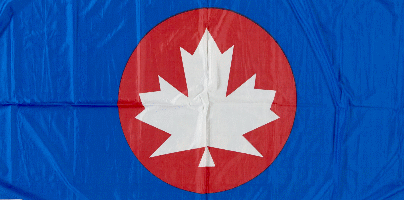 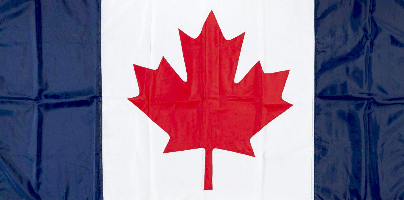
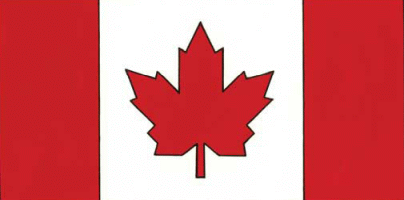 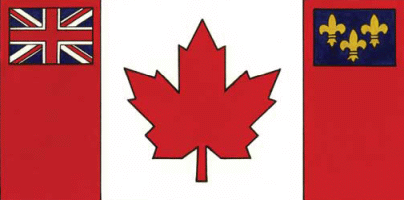
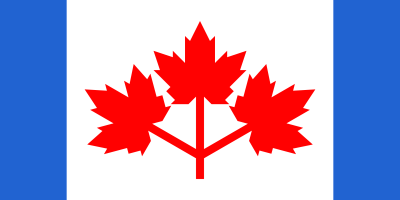 Pearson's own preferred design was of three maple leaves with blue bars (last one, above right). After considering a few thousand concepts submitted by Canadians, the official selection of three finalists was made: 


The maple leaf was a familiar symbol that had a long history of use in Canada. The maple leaf emerged in the 19th century as a symbol of Canadian identity and was everywhere in popular culture: books, songs, coins, badges, banners, and many other items. Generations of Canadians had already adopted the maple leaf as a symbol of their identity, but it was during the First World War — where it was used as the cap badge worn by members of the Canadian Expeditionary Force — that it became the most widely recognized emblem of the nation. Most poignantly, it is a single maple leaf that is carved upon many of the headstones of Canadian service men and women who gave their lives in the two world wars. For many, the maple leaf was a shared symbol of pride, courage and loyalty. |